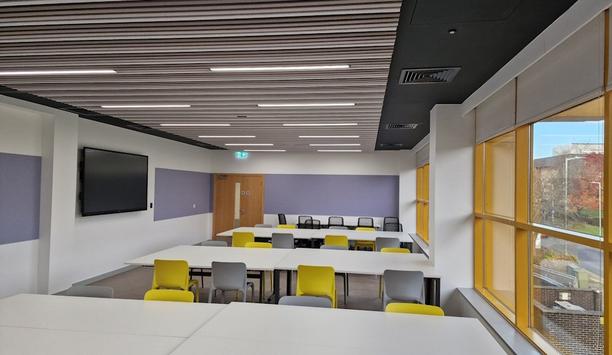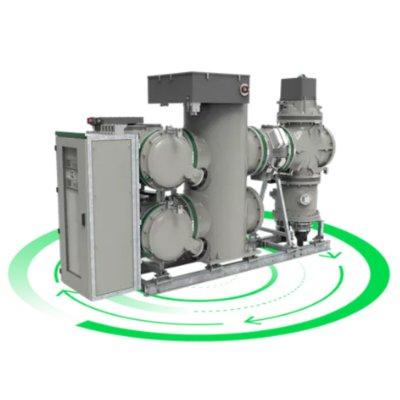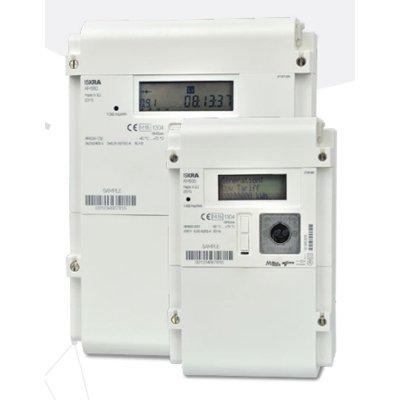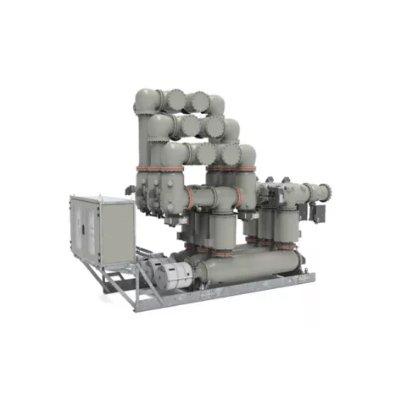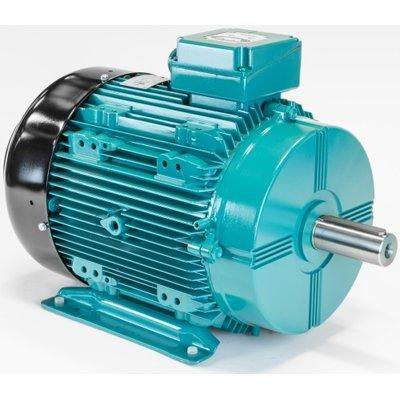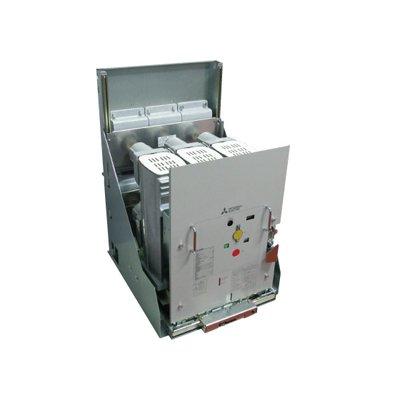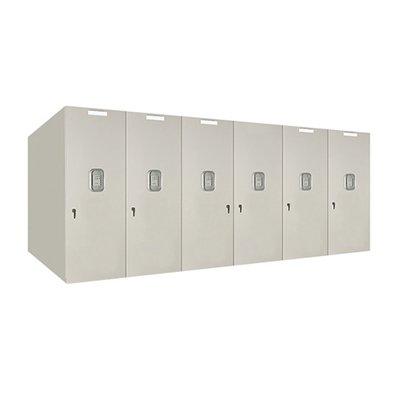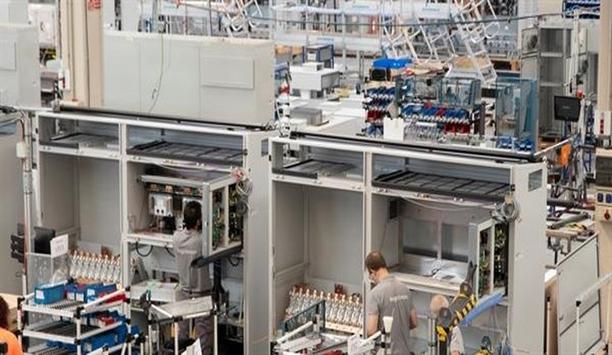Data centers play a crucial and essential role in the increasingly digital, connected, and virtualized world. Since data centers have huge energy requirements, power solutions that can reduce power losses, boost efficiency, and enhance thermal control are required.
Traffic on the Internet has grown considerably in recent times due to a more significant number of users, the widespread use of mobile devices and social networks, and the remote storage of information in the Cloud. According to analysts, the growth of this traffic still needs to reach full saturation.
These growth forecasts raise questions regarding equipment efficiency and electricity consumption, which spurs the development of new energy-efficient power conversion technologies like those offered by wide bandgap (WBG) power devices.
Efficiency is paramount
Energy demand is rising due to the growing volume of digital data created, processed, and stored
In addition to the physical infrastructure, a data center is a structure that houses networked computer servers for electronic processing, storage, and distribution of data. The key component of a data center is the server, a device that stores data powering the Internet, cloud computing, and corporate intranets.
Energy demand is rising due to the growing volume of digital data created, processed, and stored. In addition to powering racks, data storage, and network units, data centers also need auxiliary cooling and ventilation equipment to remove the heat produced during data processing and the conversion of electrical power.
Typical structure of the power conversion system
The typical structure of the power conversion system used in a data center comprises several AC/DC, DC/AC, and DC/DC voltage converters, on which the efficiency of the entire data center strictly depends.
There are two key benefits to lowering the losses in the converters that power the data processing and storing devices. First, there is no need to supply the energy not being converted to heat; secondly, there is a reduction in the energy required to dispose of the waste heat.
Data center efficiency
Data center efficiency is often measured with the power usage effectiveness (PUE) metric. Developed by The Green Grid as a standard way to compare data center energy use, the PUE is defined as the overall data center energy use ratio to information technology (IT) equipment energy use.
The PUE measure is a basic enough statistic to identify areas for development
The PUE measure is a basic enough statistic to identify areas for development. Despite not being a perfect metric, it has become an industry standard. The PUE should ideally be close to unity, meaning that the data center only requires electricity to support its IT demand.
However, according to the National Renewable Energy Laboratory (NREL), the average PUE is around 1.8. Data centers’ PUE values range widely, but efficiency-focused data centers frequently attain PUE values of 1.2 or less.
A high PUE can have different causes, like the following:
- ‘Zombie’ (or ‘comatose’) servers and uninterruptable power supplies (UPSs), meaning equipment turned on but not fully utilized. It comprises unintentionally idle devices that consume electricity without visibility or external communications.
- Inefficient backup and cooling strategies.
- Data centers are more focused on reliability than on efficiency.
Adding variable frequency drives (VFD) to cooling fans
Adding variable frequency drives (VFD) to cooling fans and minimizing the number of servers and UPSs are two common methods for lowering PUE. In the last few years, the transition from the legacy 12 V architectures to more efficient 48 V solutions has reduced significant power losses (I2R losses), providing increasing power-demanding processing systems with more efficient solutions.
Using 48 V in power architecture results in sixteen times lower I2R losses. This helps meet the ever-demanding energy efficiency requirements, considering that a one-percent efficiency improvement can save kilowatts at the whole data center level.
Benefits of WBG semiconductors in data centers
Although silicon (Si) is the most well-known technology, it has a smaller bandgap than WBG materials
Although silicon (Si) is the most well-known technology, it has a smaller bandgap than wide bandgap (WBG) materials, like gallium nitride (GaN) and silicon carbide (SiC), which lowers its operating temperature, limits its use to lower voltages and reduces its thermal conductivity.
Adopting more effective power devices, such as WBG semiconductors in place of Silicon, can be a more effective alternative. WBG semiconductors, such GaN and SiC, allow overcoming the limits of silicon technology, providing high breakdown voltages, high switching frequency, low conduction and switching losses, better heat dissipation, and smaller form factor.
This results in higher efficiency of the power supply and power conversion stages. As mentioned earlier, in a data center, even a single percentage point increase in efficiency can translate into substantial energy savings.
GaN
GaN is an emerging class of wide bandgap material because it has an electron bandgap three times larger (3.4 eV) than silicon (1.1 eV). Additionally, GaN has twice the electron mobility compared to silicon. GaN's well-known and unparalleled efficiency at very high switching frequencies is made possible by its tremendous electron mobility.
These properties allow GaN-based power devices to withstand stronger electric fields in a smaller die size. Smaller transistors and shorter current paths result in ultra-low resistance and capacitance, allowing for up to 100 times quicker switching rates.
Reduced resistance and capacitance
Reduced resistance and capacitance also increase power conversion efficiency
Reduced resistance and capacitance also increase power conversion efficiency, giving more power for workloads in data centers. Instead of producing more heat, which would require more cooling for the data center, more data center operations may be done per watt.
High-speed frequency switching also decreases the size and weight of energy-storing passive components because each switching cycle stores substantially less energy. Another advantage of GaN is its ability to support different power converter and power supply topologies.
GaN’s key features relevant to data center applications are the following:
- Support for hard and soft switching topologies
- Fast turn-on and turn-off (GaN switching waveform is almost identical to the ideal square wave).
- Zero reverse recovery charge
- Compared to Si technology: 10x higher breakdown field; 2x higher mobility; 10x lower output charge; and 10x lower gate charge and linear Coss characteristic
These features allow GaN power devices to make solutions achieving:
- High efficiency, power density, and switching frequencies
- Reduced form factor and on-resistance
- Low weight
- Nearly lossless switching operation
These high-voltage bridgeless totem-pole PFC stages and high-voltage resonant LLC stages can meet the stringent requirements of server SMPS, achieving a flat efficiency above 99% over a wide load range and high power density.
SiC
Historically, one of the first applications of SiC power devices in data centers regarded the UPS equipment
Historically, one of the first applications of SiC power devices in data centers regarded the UPS equipment. UPS is essential for data centers to prevent the potentially disastrous effects of a mains-voltage failure or interruption on their operations.
Power supply redundancy is crucial to assuring a data center’s operational continuity and dependability. Optimizing the data center's power consumption effectiveness (PUE) is a primary priority of every entrepreneur and operations management.
Reliable, constant power source
A reliable, constant power source is necessary for a data center. Voltage and frequency-independent (VFI) UPS systems are frequently employed to meet this requirement. An AC/DC converter (rectifier), a DC/AC converter (inverter), and a DC link comprise a VFI UPS device.
A bypass switch, primarily used during maintenance, connects the UPS output directly to the AC power source at the input. In the event of a mains power breakdown, the battery typically made up of many cells, connects to a buck or boost converter and powers the power supply.
Devices are typically double-conversion circuits
Because the alternating voltage at the input is converted to direct voltage and then again into a precisely sinusoidal output voltage, these devices are typically double-conversion circuits. The result eliminates any supply voltage variation, enabling the UPS to provide the load with a steady and clean signal. In addition to isolating the system from the power source, the voltage conversion process shields the load from voltage fluctuations.
Until recently, insulated-gate bipolar transistors (IGBTs) with three-level switching topologies had the best efficiency results. 96% efficiency levels were achieved thanks to this approach, which is a significant improvement over earlier transformer-based models.
Silicon carbide transistors
Silicon carbide transistors have made it possible to significantly reduce (> 70%) power losses
Silicon carbide transistors have made it possible to significantly reduce (> 70%) power losses and increase efficiency in double-conversion UPS systems. This remarkable efficiency (over 98%) persists during lower and heavy load scenarios.
Results of this type are obtainable because of the intrinsic properties of silicon carbide. Compared with traditional silicon-based devices, such as MOSFETs and IGBTs, SiC can operate at higher temperatures, frequencies, and voltages.
An additional benefit of SiC-based UPS is a better heat loss value (or heat rejection), which enables operation at higher temperatures. This feature lets designers adopt more compact and economical cooling solutions. Overall, a SiC-based UPS is more efficient, lighter, and smaller than an equivalent model with silicon-based components.
SiC-based semiconductors
SiC-based semiconductors can operate at higher temperatures than traditional Si semiconductors due to their inherent properties. The customer’s cooling costs can thus be reduced because of the UPS's lower heat loss and ability to operate at higher temperatures.
When maximizing the available floor space in a data center, a SiC-based UPS reduces weight and size compared to the conventional Si-based UPS. Moreover, a SiC-based UPS requires less floor space increasing the available power capacity in a given area.
Conclusion
In summary, WBG materials, like GaN and SiC, are emerging semiconductors that will establish a new trajectory for power electronics in demanding applications such as data centers. Their benefits include increased system efficiency, lower cooling system requirements, operation at higher temperatures, and higher power density.
With the integration of GaN and SiC power devices into voltage converters and power supplies, the goals of data center operators to achieve higher efficiencies, maximize the floor space, and reduce the operating costs across the facility are being achieved.



